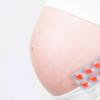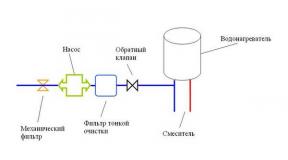Presbyopia: both eyes, treatment, eye exercises - full information. Myopia, Presbyopia Forms or types of Presbyopia
Eye presbyopia is a disease that is directly related to the natural process of aging human organism, few people manage to avoid it, often manifested in adults. Presbyopia is a decrease in the accommodative function of the eye due to aging.
The main symptom of the disease: deterioration of the ability to see at a small distance. The patient appears a pronounced fuzziness of vision, and concomitant symptoms can be observed: the deterioration of general well-being, chronic fatigue Eye, strong headaches.
During the diagnosis of pathology, the ophthalmologist does not necessarily test the patient's vision, conducts the procedure, evaluates and eye refraction.
In essence, the presbyopia of the eyes or, as it is also called, the older, is the inevitable process. The pathology develops on average in adult people aged 40 to 45 years old. If a person suffers from far-sighting, the process begins earlier, and if, later. In both cases, the decline is progressive, and as a result, the ability of the organ of sight to focus on nearby objects is lost completely. According to ophthalmologists, at present, no less than 25% of the population suffers.
In the international classification of disease MKB-10. Presbyopia has a code H52.4..
Causes of Presbyopia
The causes of the development of presbyopia are the natural processes of aging lens, leading to the weakening of accommodation.
IMPORTANT! Accommodation is the unique ability to instantly adapt to the vision of objects located relative to each other at different distances.
The main pathogenic link in the aging of the lens is the facility, for which the dehydration of the lens and loss of plasticity is typical. Especially active dystrophic changes occur in the ciliary muscle, the main function of which is to hold the lens.
Due to the developing dystrophy, new muscle fibers of the ciliac muscle cease to form, the connective tissue replaces them. As a result, the cutting ability of the muscle is significantly reduced.
The described process is related to disruption of metabolism through the retinal vessels. The disease is particularly rapidly developing in people suffering from atherosclerosis, hypertension, diabetes and some other pathologies. The development of Presbyopia can also lead professional activity Human, if it is associated with an increased visual burden at the close distance. The risk group includes primarily people working at a computer, jewelers, laboratory technicians, engravers, writers.
Presbyopia of both eyes
The age-related people are most often developed by the Presbyopia of both eyes. It manifests itself in the following disturbing symptoms:- a person becomes difficult to handle minor objects (for example, it is almost impossible to hover in a needle needle);
- in the process of reading, bright light be required;
- to read the small text it is required to take it on a relatively far distance;
- decreases the perception of contrast when reading;
- eyes quickly get tired.
Not many are known, but the presbyopia of both eyes in people suffering from myopia and farewell, often manifests itself in different ways. Persons with the farewell to achieve mature age decreases vision of both distance and close to. People with the myopia presbyopia can be left unnoticed at all. For example, in vision -1d or -2d (light myopia), two processes are empty, and the need for reading glasses comes far late. If the myopia is strong, the likelihood is that the symptoms of presbyopia will not appear at all.
Treatment of Presbyopia
Before proceeding with the treatment of presbyopia of the eyes, the disease should be diagnosed. For this, the following procedures are held:- standard verification of visual acuity by means of a table;
- (definition of intraocular pressure);
- ophthalmometry (determination of radii curvature of the corneal surface);
- (Study of the refractive power of the eyes).
The studies described allow an oculist to make a comprehensive assessment of the functionality of the patient's vision organ. The latter, in the case of the discovery of presbyopia, will be aimed for further treatment to an ophthalmologist. Most often, the therapeutic treatment of presbyopia is reduced to spectacular correction or laser (surgical) treatment.
As a rule, patients prescribe bifocal glasses, whose lens simultaneously has two focus - one for vision at close range, and the second - for vision of the distance.
Some experts prefer to use progressive lenses. They adjust vision on different ranges. Their main difference lies in the fact that the difference between the zones of videos is impossible and close to see the naked eye. Such a lens has three main zones:
- upper - for vision in the distance;
- lower - for vision near;
- intermediate - a kind of progression corridor, in which the optical power of lenses is smoothly changing.
Patients suffering from Presbyopia, the gymnastics for the eyes, a cerinary-collar zone massage, and (in some cases) reflexotherapy or hydrotherapy are prescribed.
Surgery
The number of surgical methods of treatment of Presbyopia, includes the so-called refractive surgery. During the operation, the doctor changes the patient the shape of a horny eye shell.
Currently, several varieties of refractive surgery are used in medicine:
Keratoplasty
This procedure involves the use of radio frequency energy when using high temperatures to microscopic spots in the area of \u200b\u200bthe horny shell of the eye. The main disadvantage of this method is not a long period of conservation of the effect. As a rule, the problem returns after a very short time.

Laser Surgery
Easy to demand methods of treatment. With the help of a special tool, the doctor performs a thin folding flap on the cornea of \u200b\u200bthe eye, removes the inner layers, so that the shape of the eyeball becomes more round.
Photographic surgery
The procedure is largely similar to laser surgery. Only the epithelium of the cornea itself is subject to removal.
There is a more radical way to treat presbyopia. It consists in replacing the lens on artificial. With a standard course of the disease, this technique is usually not used. It is resorted in the case of a patient in a patient such a concomitant disease, as.
Correction of Presbyopia
The easiest and most affordable method of presbyopia correction is monophocal glasses. Their selection should be individual. At the initial stages of the development of pathology, experts recommend to increase the distance to patients reading text, increase the level of illumination in the room and more often give vacation eyes while working. When designated recommendations stop to work, doctors prescribe glasses with minimal correction.
There are a number of situations where the vision is not possible by means of glasses. It is primarily about the following moments:
- If a person does not have the opportunity to use glasses on professional restrictions (sailors, military, stallors, athletes, etc.).
- Wearing glasses cause strong discomfort.
In the cases listed instead of glasses can be used. Special lenses for presbyopia correction appeared even at the end of last century. And now the choice of methods for correction with their help is quite wide:
Combination of lenses with glasses
Such correction is usually required if presbyopia develops in parallel with or hypermetropy. One of the corrective funds is appointed for further vision, and the other for the near.
Monovizual correction
This manipulation lies in the selection of one eye lenses to work at close range, and on the other - on the far.
Correction of bifocal lenses
Such lenses can be of two types:- Bivizual simultanes. In them, one zone adjusts the vision at the close distance, and the other on the far. Localization of both zones occurs in the pupil area. Due to this, directly on the retina, both images are projected with a different sharpness rate, the choice of perception in turn occurs on the sensory level.
- Alternating. In them, the principle of operation is similar to bifocal points: there are two zones with a different refractive index. The effect of the lens is based on its vertical movement and the installation before the pupil of the required zone.
Correction of multifocal lenses
In such lenses there is no clear separation between the central and peripheral parts of the optical zone. Thanks to this design, a smooth transition of refraction from one view zone is provided to another. Corrective properties are achieved by changing the radius at different sections of the rear or front surface of the lens.

Prevention of Presbyopia
Most pathologies are easier to prevent than cure. The presbyopia of the eyes, unfortunately, does not apply to the number. Many doctors do not even consider her illness, claiming that it is completely natural change In the body associated with aging, to stop which a person cannot.
It means that preventive measuresAllowing to fully protect yourself from the development of presbyopia are absent. But slow down the development of the disease is quite real. Especially close attention when working in this direction is recommended to devote to the organization of proper nutrition, replenishing the lack of vitamins in the body and the regular execution of exercises for the eyes.
Especially negatively in state of view affects the lack of vitamins A, B and C. In addition, the development of presbyopia can accelerate the development of zinc, magnesium and copper.
In the absence of special problems to achieve forty years, all people are strongly recommended not to neglect a regular visit to an ophthalmologist. Timely detection of the problem will allow adequate measures necessary to preserve vision for a longer period of time.
Additionally, you can use one of the people's prevention of presbyopia. A very useful decoction of cornflower, strawberry flowers, marigolds and plantains. Prepare a means are very simple - herbs should be mixed in equal shares (total volume should be about two tablespoons) and pour 0.5 liters of boiling water. The composition follows three times a day before meals 70 grams at a time. There are no restrictions on the duration of the drug intake.
No less useful will be more familiar to all decoction of rosehip. Petals of the plant (dried in advance) in the amount of teaspoon you need to pour 0.5 liters of water and boil a couple of minutes on fire. It is necessary to use the decoction twice within a day - in the morning and evening at half a glass.
If there is no allergies to honey, it can also be applied as a prophylactic agent, it is added to any of the above decoctions in the amount of one canteen boat and thoroughly stirred until complete dissolution.
Modern medicine successfully adjusts the progressive presbyopia, because even if the disease was not diagnosed on his initial stage, reasons for panic should not be. Most importantly, do not let the process on samonek further and seek help in a good clinic to an experienced ophthalmologist who will select the most suitable event in a particular case.
In recent decades, there has been a tendency to increase the average life expectancy.
Already, more than 2 billion people on our planet over 60 years old.
On the one hand, this is a positive phenomenon, and it speaks about improving the quality of life.
But on the other hand, due to the large number of older people, the doctors of all specialties face the problem of prevention and treatment of various age-related changes.
Ophthalmologists - no exception. Doctors of this profile are more often found with pathologies associated with age. One of these common pathologies is presbyopia. In this article, we will consider the specified alert in detail.
What it is?
Presbyopia - disruption of eye focus on objects at close range. The disease is directly related to the natural age-related changes.
And sooner or later, it arises from every person who has stepped over a sixty-year-old. Some people begin to notice difficulties in reading and needlework for 40 years.

It is noteworthy that other types of view are not violated: the patient still sees well on medium and long distances. Often, such a violation is called "short-hand disease."
Such a name appeared, because usually for normal focusing, the suffering from Presbyopia has to give an object at least for the distance of the elongated hands.
Brief history of illness
Accommodation - eye ability to focus on objects located at different distances. Such an "adjustment" occurs due to the voltage of some muscles and the temporary change of the form of the lens.
Over time, this ability is lost due to dystrophic changes in the ciliary muscles and losing a lens of its elasticity. The crystal cannot take the desired shape, and the image is incorrectly projected onto the retina.
After 60 years, the accommodation distance is usually reduced to 1 diopter, and the nearest point on which the eye can easily focus, is at a distance of at least 100 cm.
Prevalence and significance
Presbyopia is the most common ophthalmic pathology caused by the aging of the body. 60% of people older than forty suffer from age-related disease. By 60 years, this figure approaches 100%.
The most common disease among the population of Western Europe, the United States of America and Japan is the most common. This is due to both high lifespan in these countries and with a large percentage of people involved in qualified work with large loads on organs of vision.
Men and women are sick with Presbyopia equally often, but the disease manifests in women at an earlier age.
Presbyopia - socially significant pathology, because in some cases without timely correction, it can lead to disability due to other violations of violation.

Risk factors
Despite the fact that presbyopias in one degree or another develops in all people during the life, some groups of persons are most susceptible to the development of this disease: some groups of persons are most susceptible:
- people aged over 40 years;
- patients with untreated hyperopias and other accommodations of accommodation in history;
- women;
- people whose daily activities or work are associated with intensive eye loads;
- persons with concomitant systemic pathologies (diabetes, myopathy, iron deficiency, violations of vessels and hearts);
- suffering infectious diseases in heavy form (vapotitis, flu, herpes, cortex, meningitis);
- constantly receiving some medicines (antidepressants, neuroleptics, anticonvulsants, diuretics);
- people who were subjected to various interventions in the eyes (laser microsurgery, photocoagulation of vessels) and on the brain;
- residents of hot regions (negative impact of ultraviolet radiation and extremely high temperatures);
- fouring defective.
The reasons

As mentioned above, the main cause of presbyopia is the age-related changes of the lens tissues and a decrease in the mobility of the eye muscles.
With age, the crystal is thickened and becomes irreversible, as a result, it cannot accept the desired curvature.
It is believed that the maximum ability to accommodate is observed in adolescence and early adolescence, and after that it begins to decline. Only after 2-3 decades of life, presbyopia becomes so pronounced that he starts to deliver discomfort.
Symptoms and diagnostic methods
Presbyopia has the following manifestations:
- headaches;
- nausea;
- deterioration of color perception;
- constant sense of tension in the eyes;
- pain in the eyes;
- photo jobs;
- the complexity of viewing objects at close distances;
- the inability to read normally and engage in small needlework near.
To determine the diagnosis of presbyopia, the doctor first collects the patient's history. He finds out what ophthalmological diseases is the respondent suffer. It is also important its age and the presence of concomitant pathologies.
No less important results of objective diagnostic studies. Most often apply:
- skiascopia;
- refractometry;
- determination of accommodation;
- ophthalmoscopy;
- biomicroscopy;
- gonoscopy;
- tonometry;
- ultrasound eyeballs;
- computer and magnetic resonance imaging brain.
Do not forget that the amount of necessary diagnostic tests can only determine the doctor. Do not try to engage in self-diagnostics, as it can confuse you even more.
Treatment
For correction age hyperility Several techniques are used.
Medicines and other non-invasive ways
First of all, preference is given to conservative methods of treatment. Patients are prescribed drugs:
- vitamin complexes for eyes in the form of tablets or droplets;
- drops to remove fatigue;
- moisturizing drops.
Most often, the drug treatment method does not give sufficient results. In this case, the glasses or lens correction applies.
This method, with proper use, is absolutely harmless, but at the same time very effective.
To correct accommodation violations, special lenses are used (usual are not suitable). There are two types of healing lenses:
- progressive.
It is important to choose not only glasses or lenses for treatment, but also for everyday socks. We carry inappropriate glasses and lenses can significantly worsen the course of the disease.
Physiotherapy methods are used in the complex with medication and spectacular correction:
- massage;
- laser therapy;
- reflexology;
- electrostimulation;
- training on the "River" apparatus.
Surgery

If a conservative methods It turned out to be powerless, you have to resort to surgical treatment. Of course, it carries certain risks of complications, but at the same time can rid a person from manifestations of presbyopia forever.
The following variants of surgical correction are most common:
- laser microsurgery (laury and superlasik);
- kerattectomy;
- intraocular interventions (replacement of natural lens on the implant);
- photoemulsification.
The following video shows how laser vision correction is performed:
Folk Methods
Folk methods should always be used with caution after consulting the attending physician and should not be used as an independent method of treatment.
Alternative medicine offers instillation of braverapeutic herbs:
- squeezing;
- marigolds;
- vasilka;
- plantain.
It is possible to use as droplets for the eyes of aloe juice, diluted with water.
Prevention
For prevention of presbyopia, you need to follow simple recommendations:
- observe the mode of work and rest;
- reduce visual loads;
- bring a healthy lifestyle;
- avoid negative environmental impact;
- in time, treat diseases of the eyes and the whole organism as a whole.
To preserve the health of the eyes for a long time, do not forget to perform special exercises:
Forecast
Forecast with Presbyopia is favorable. Usually this disease has a benign current and does not cause serious problems.
Conclusion
- Presbyopia - loss of ability to clearly see objects near.
- Presbyopia - age violation.
- Presbyopia suffers most of the elderly.
- For treatment, both conservative and invasive techniques are used.
Video
The following video may come in handy:
Presbyopia or senile blindness, or short-hand disease is a disease that develops mainly in persons older than forty years is the pathology of the refraction of the eye, the age weakening of the accommodation of the eye.
It is associated with changes in the physicochemical composition of the lens (dehydration, loss of tissue elasticity, sealing, and the like). All these processes eventually violate the accommodation process.
The eye is a complex comprehensive optical system, thanks to her, the person sees the items well at different distances. The process of forming the image begins from the moment when the light passes through a cornea, which represents a lens with a certain optical force.
Then, the light passes in the front chamber through transparent eye fluid, wash the front chamber of the eye, and reaches the holes in the rainbow shell, its diameter depends directly on the amount of this very light. This is a hole - pupil.
Crystal - this is the second largest lens in the optical system of the eye after the cornea. It allows you to focus the image on the retina, which perceives everything in the inverted form and transforms the electromagnetic radiation of the visible part of the spectrum into specific nerve impulses here.
After which the nervous impulses reach visual analyzer in the brain spectator nervy, There is an image processing.
In young age, the lens can change the curvature, as well as optical power. This process is called the accommodation - the ability of the eye to change the focal length, thanks to the eye, it also sees well and close to the eye. With an increase in the number of years of the years, this process is broken. This condition is called presbyopia.
Causes of the disease
Presbyopia is the natural aging of the lens. Age changes occur gradually. Reducing the strength of the ciliary muscle forcing the crystal to change its curvature, and with it and optical force when trying to focus on different (close, middle and distant) distance at a young age is the basis of the pathological process.
But not all the elderly people have a decrease in vision. In addition, this violation can be prevented and eliminated.
So, there are three main theories of the development of presbyopia:
- Incorrect nutrition and lack of vitamins.
- Violation of the ability to focus the eyes at different distances (to eliminate the manifestations of presbyopia, special gymnastics for the eyes are recommended).
- Changing the normal anatomy of the eyeball at far-sightedness or myopia.
Signs of Presbyopia
- It is hard to see small items (for example, it is impossible to conceive a thread in the needle).
- When reading, the letter acquire a grayish hue and merge, while the need for direct and brighter light for reading appears.
- The text is visible only when removing the book on a large distance.
- Fast fatigue eye.
- Bulk view.
In people with myopia and people, the disease is diagnosed in different ways. In patients with congenital hyperopia over time, vision is reduced both near and away. And in patients with myopia (myopia), the process of aging lens can not be noticeable.
For example, with a small myopia, these two processes compensate, and the patient will not need to use points for a long time. People with a high degree of myopia have glasses that are practically constantly, but removed to work near.
Diagnostics
To identify pathology there are special tests that can be done at home on their own. In addition, there is a special device for the diagnosis of presbyopia - odouropter. It measures human refractive abilities. In difficult cases, they use a computer autorecatter.
Treatment
For vision correction, lenses or glasses are used for presbouropia. If there were no special problems with the vision of a person before, it will also be necessary for reading glasses.
In case the glasses were previously used, you should check the vision again and change them. There are convenient bifocal glasses whose glasses are represented by two parts: upper intended for vision, and lower for vision near.
There are currently trifocal glasses, and comfortable contact lenses that can create a smooth transition from a long-distance to the middle and close vision.
To methods surgical treatment include laser keratomy and photorefractive kerattectomy. The basis of these methods is the use of a laser to change the shape of the cornea. Thanks to this, one eye is "tuned" to work near, and the other can accurately see far-spaced items.
Such artificially formed vision is called monocular. Another surgical method of treatment of presbyopia is an implantation of an artificial lens.
To date, a set of exercises for the eyes of presbyopia has been developed. Regular classes are able to suspend the decline in vision, and sometimes even restore it. The complex is based on the principle of relaxation. It is very important to "teach your eyes" relax.
To do this, you need to regularly perform an exercise with wristing clock and alarm clock and read alternately, then another eye. Yoga for the treatment of Presbyopia is recommended to look at the sun at sunrise and at sunset.
Useful for leisure eyes look at the blue sky, clouds, horizon line, green forest.
Prevention of disease
If the first signs of presbyopia appeared, it is important to comply with these simple recommendations:
- Breathe rhythmically and deep when performing work near the eyes.
- Relaxing the eyelids as much as possible when reading, blinking often, but leisurely.
- Moisturizing the eye should be adequate, you can use special drops of "natural tear".
- Perform regularly easy exercise: alternately consider items near, then away.
It is also helpful to take vitamins and special drugs, which are beneficial to the organ of view, for example, Aevit, Blueberry Forte with Lutein, Askorutin and others.
Look interesting video on the topic of articles with the famous leading:
- This is an age reduction in the accommodative ability of the eye, associated with the natural process of aging of the lens. Presbyopia is manifested by a deterioration of the ability to see at close range: blur and fuzziness of vision near, asthenopic symptoms (headaches, eye fatigue, poor general well-being). The diagnosis of Presbyopia includes an inspection, evaluation of refraction and accommodation, conducting ophthalmoscopy. The treatment of presbyopia can be in the selection of the necessary points, laser vision correction (LASIK, FRK), refractive replacement of lens (lensctomy).
MKB-10
H52.4.

General
Presbyopia or elderity is an inevitable process associated with natural eye aging. It is known that with normally refractures (emmetropy), presbyopia develops at the age of 40-45 years, with depreciation - somewhat earlier, and at myopia - later. With age, progressive decrease in accommodation occurs, which leads to a gradual loss of the ability of the organ of sight to focus on nearby objects. According to ophthalmology, Presbyopia occurs in 25-30% of the population.

Causes of Presbyopia
The basis of presbyopia is the natural involutionary processes occurring in the organ of view and leading to the physiological weakening of accommodation. The development of presbyopia is an inevitable age process: so, by 30 years, the accommodative ability of the eye is reduced by half, by 40 years - by two thirds, and to 60 - almost completely lost.
Accommodation is the ability of the eye to adapt to the vision of items located at different distances. Accommodatory mechanism is ensured by the properties of the lens to change its refractive force, depending on the degree of items of the subject and focus its image on the retina.
The main pathogenetic link of the Presbyopia is sclerotic changes of the lens (fackerelosis), characterized by its dehydration, sealing capsule and nucleus, loss of elasticity. In addition, adaptive opportunities and other eye structures are lost with age. In particular, dystrophic changes are developing in the holding crust of the ciliary (ciliary) muscle of the eye. Dystrophy of the cereal muscle is expressed by the cessation of the formation of new muscle fibers, their substitution connective tissueWhat leads to the weakening of its contractile ability.
As a result of these changes, the crystal loses the ability to increase the radius of curvature when considering sitting close to the eye. With a presbyopia, the point of clear vision is gradually moving away from the eye, which is manifested by difficulty performing any work near.
The age changes of the optical apparatus of the eye are associated with disruption of metabolism through the retinal vessels and conjunctivations and are developing faster in people suffering from diabetes mellitus, atherosclerosis, arterial hypertension, hypovitaminosis, chronic intoxications (nicotine, alcoholic). The earlier development of presbyopia contributes to hypermetropium, astigmatism, frequent eye inflammation (conjunctivitis, uveitis, globia, keratitis), eye operations, eye injuries, as well as professional activities associated with tense and continuous visual load at close range (laboratory technicians, engravers, programmers, etc.). In turn, early presbyopia emerged is a risk factor for the development of glaucoma.
Symptoms of Presbyopia
In people with Emmetropia, the first signs of Presbyopia are developing aged 40-45 years. When working at close range (letter, reading, sewing, classes with small details), fast visual fatigue occurs (accommodative asthenopia): eye fatigue, headaches, stupid pain in the eyeballs, bridge and vanity, tearing and light lights. With presbyopia, items located near, become blurry, fuzzy, which is manifested by the desire to push the object of occupation away from the eye, to include brighter lighting.
Subjective manifestations of presbyopia are developing when the nearest point of clear view is distinguished from the eye by 30-33 cm, that is, on average after 40 years. The accommodation changes are progressing up to 65 years - approximately at this age the nearest point of clear vision is distinguished by the same distance where the further point is located. Thus, accommodation becomes zero.
Presbyopia in hypermetrops (persons with farewell) manifests itself, as a rule, before - aged 30-35 years. At the same time, not only vision is worsened, but also in the distance. Thus, hyperopia not only contributes to the early development of presbyopia, but also enhances it.
People with myopia (myopia) presbyopia can remain unnoticed. So, with small degrees of myopia (-1-2 DPTR), the age loss of accommodation is compensated for a long time, and therefore developing presbyopias develop later. Persons with myopia -3-5 DPTR often do not need vision correction at all at all: in this case, they simply just remove the glasses in which they look in the distance.
If the manifestations of presbyopia are revealed earlier than 40 years, it is necessary to carefully examine the ophthalmologist, aimed at identifying hyperopia and immediate, properly organized correction.
Diagnosis of Presbyopia
In the diagnosis of presbyopia, age characteristics, asthenopic complaints, as well as data of objective diagnostics, are taken into account.
To detect and evaluate the Presbyopia, an acuity of visibility is checked with a refractive test, the definition of refraction (skiascopia, computer refractometry) and the volume of accommodation, the study of finding the nearest point of clear vision for each eye.
During the diagnostic reception, an ophthalmologist, if necessary, makes a selection of glasses or contact lenses for presbyopia correction.
Correction and treatment of Presbyopia
The correction of presbyopia can be carried out by optical, microsurgical and laser methods.
The most often resorted to the spoken correction of presbyopia, which is carried out with the help of collective "positive" lenses. In ophthalmology, they use specially calculated parameters of the power of the glasses necessary for the correction of presbyopia at each age. Thus, for an emmetropic eye, the lenses of + 0.75 + 1 DPTR are prescribed for an emmetropic eye, in the future every 5 years, another +0.5 DPTR (i.e., at 45 years old, the power of glass will be +1.5 DPTR; in 50 Years +2 DPTR; in 55 years +2.5; in 60 years + 3 DPTR, etc.). As a rule, after 65 years, the strengthening of the presbyopia correction is not required.
Hypermetrops for calculating the optical power of glass to the value of the age correction of presbouriopia must be added the degree of hyperopia. To determine the strength of the lenses, Miop should make the degree of myopia from the value of the appropriate age of the presbyopic lens. It should be borne in mind that these data are approximate and necessarily require clarification by directly attaching glass to the eye.
Taking into account the need, simple glasses are selected for work at close range, complex glasses (bifocal) with two focus for vision of the distance and near, progressive, multifocal lenses or other options for the optical correction of presbyopia.
In the complex presbyopia correction, vitaminotherapy, eye gym, neck-collar zone massage, magnet and therapy, reflexology, hydrotherapy, electrocoulosulation, training at the Accommodotrene (the "manual") are used.
Surgical treatment of presbyopia can also be variable. In the field of laser surgery, the presbylasik method is successfully used to correct the presbyopia, with the help of which a multifocal surface is formed on the cornea, allowing you to get on the retina, both far and near focus. Other methods of laser correction of Presbyopia include FRK (photoforephractive kerattectomy), Femto Lasik, Lasek, Epi-Lasik, Super Lasik, etc.
The intraocular correction of presbyopia implies a pressure replacement, which has lost its physicochemical properties and elasticity, the ability to accommodate the artificial - intraocular lens (IOL). For presbyopia correction, special accommodating monophocal IOL or multifocal IOL are used, which are implanted immediately after the facoemulsification of cataracts.
Prevention of Presbyopia
Fully excluding the development of presbyopia is not possible - with the age of the crystal, inevitably loses its initial properties. In order to remove the offensive of presbyopia and slow down the progressive impairment of vision, it is necessary to avoid excessive visual loads, to properly select lighting, perform gymnastics for the eyes, take vitamin preparations (A, B1, B2, B6, B12, C) and microelements (Cr, Cu, Mn, Zn IDR).
It is important to attend an ophthalmologist annually, to conduct a timely correction of refraction anomalies, engage in treating eye diseases and vascular pathology.
Our eyes are subjected to a lot of load daily that over time inevitably affects the quality of vision. Age processes associated with the natural wear of the body affect all human bodies, including the visual apparatus.
One of the manifestations of age-related changes is the prebouring eye - what is it and what symptoms is accompanied by a violation? Is it possible to postpone the natural process of aging, and whether to rely on full cure? Read further.
What is this violation?
The optical system of the human eye is finally formed by 12-14 years. If optics developed normally and successfully stabilized, the person will become the owner of excellent vision, which is called. In the absence of a number of adverse factors and observance of hygiene view, the function of visual perception will remain good for the next years.
But no one is insured against a number of physiological changes. We are talking about presbyopia - so ophthalmologists are called age hyperopia at which vision is worse near. A person gets difficult to recognize small font, image details and minor items located on a slight distance from the eyes. Sometimes the presbyopia is jokingly called "short-hand disease." You can pay attention to how adult patients with push the book, newspaper or label away from the eye to read the text.
The age phenomenon is due to a decrease in accommodative possibilities of the organ of vision. This is the most important function of the eye associated with the ability of the lens to change its refractive force due to an increase in / reducing the curvature of the surface. According to statistics, the progressive decline in accommodation occurs in 25-30% of the population. The disease is even assigned the code on the ICD 10 - H52.4.
IMPORTANT! Diagnosis of the disease includes not only standard studies, such as refractometry and ophthalmoscopy. Additional techniques use to eliminate concomitant - tonometry and gonoscopy.
Causes of age hypermetropia
The violation is based on natural regression processes associated with the loss of tissue elasticity. In the visual apparatus, they are affected primarily a crystal - a transparent lens designed to refract and direct the rays of light on the retina.
In the young age, the lens is very elastic - it easily changes its curvature and adjusts to the perception of objects at different distances. Evaliable role is played by zinnov bonds - tissue formations that fix the natural lens. When viewed in the distance of zinnov, ligaments are in a relaxed state, a lens becomes more flat and well transfers the long-scale picture. As soon as the look is translated into the near object, the muscles are strained, and the lens increases its optical power.
Over time, the fibers, of which consists of a lens, become coarse and less mobile. Involutions and zinnov ligaments are exposed - they are no longer able to quickly respond to changing the focus and change their tone. Over time, accommodation is increasingly difficult, which is inevitably manifested in hyperopia. The lens is constantly in a relaxed state due to a reduced tone of ligaments, and its optical power decreases.
One of the pathogenetic links of presbyopias protrude sclerotic processes affecting lens cells - dehydration, sealing capsule and kernel.
REFERENCE! Dehydration is a balance of the balance between the flow and destruction of moisture, causing dehydration. At high school, it is manifested in the cut of the skin, mucous membranes, eye structures.
Provice the rapid progression of presbyopia is capable of common somatic pathologies associated with violation exchange processes In the retina and conjunctiva.
 That's why the diagnosis of presbyopia is often picked by:
That's why the diagnosis of presbyopia is often picked by:
- diabetes;
- atherosclerosis;
- hypertensive disease;
- hypovitaminosis;
- with chronic intoxications of alcohol and nicotine.
From the initial state of the organ of sight will depend on the forecast of the disorder - at what age the presbyopia will begin and how pronounced it will be expressed. As a rule, the first signs of age hypermetropy in persons with emmetropic vision are observed after 40-45 years, when the accommodation of the eye is reduced by ⅔. By 60, presbyopia is manifested very bright, because by this time the eye almost completely loses accommodation properties.
Inflammatory ophthalmological diseases are promoted to the earlier development of hyperopias - conjunctivitis, blepharitis, keratitis, will take away. In the risk group, representatives of occupations associated with high eye load on the eyes, as well as persons who survived and injuries. A little later (after 45-50 years), presbyopia is developing at - in persons who have a better seen in the young age close to the distance. But if the far-sightedness took place up to 30-35 years, then with age it will progress faster.
Symptoms of the disease
The symptoms of the violation depends on the so-called the nearest point of a clear view, which is distinguished with age. If the specified point is removed by about 30 cm, a person begins to feel the first signs of age limitness.
The main one is a worsening view near:
- fucetitude image;
- blur borders;
- two of the letters and small elements.
It makes it difficult to read the fine print font and handwritten text, needlework and work with small objects. To smooth the refraction errors, a person is forced to constantly strain his eyes.
Long-term visual loads and work on the computer lead to the appearance of asthenopic symptoms:

INTERESTING FACT! With bright sunlight, the symptoms of presbyopia decrease. This is due to a rainbow shell, the diameter of which is reduced to the light and contributes to a short-term increase in focus.
If the diagnosis of hypermetropia was supplied to the patient in the youth, then presbyopia will be accompanied not only by signs of hyperopia, but also of myopia. A person will be bad to see far and close from herself, not to experience difficulties when focusing look at average distances.
For a long time, unnoticed, weak senile hypermetropy remains in people with myopia. They have an age reduction in accommodation compensated for the form of the eyeball and lens. Presbyopia is manifested later or leaks less expressed.
Prevention
Although the age-related changes of the lens, the retina and zinnovy bundles cannot be prevented, to delay the offensive of such violations. Ophthalmologists argue that total 6. simple ways allow to keep good eyesight to old age.
Professions. Even in the absence of problems with vision, preventive inspections from the ophthalmologist must be held at least once a year. Inspections are needed not only for timely detection of violations. They help to discover severe concomitant diseases about which the patient may not even guess. In particular, early presbyopia is the main risk factor for the appearance of glaucoma. And by the state of the fundus it is possible to detect diabetes and arterial hypertension.
 Competent correction. Even minor vision problems require optical correction. It helps to use all the structures in the process of visual perception, which will serve as the basis for the restoration of acute.
Competent correction. Even minor vision problems require optical correction. It helps to use all the structures in the process of visual perception, which will serve as the basis for the restoration of acute.
Ophthalmologist will help to choose points or lenses on optical characteristics. No difficulties selection of correction tools even with or its combination with.
Proper nutrition . Nutriciologists compiled a whole list of products that will be useful for the eyes. The list includes slow carbohydrates - buckwheat, oatmeal, whole wheat bread, pasta from solid wheat varieties. No less useful carrots, spinach, persimmon, corn, seafood, fish, cereals and vegetable oils.
REFERENCE! Myth O. healing properties Blueberries for the restoration of vision have long dispelled. Scientists have proven that vitamins and other useful compounds in it are no longer more than in other berries.
Ultraviolet protection. The straight sun rays injury the shells of the eye, which can lead to the development of sharp and chronic pathological processes. With prolonged exposure to ultraviolet, a storage effect is created - the radiation continues to destroy the cells even when there is no irritant. Frequent complications caused by the Sun, Cataract, burns, retina pathology, photo geracity, eyelid cancer. It is especially important to protect your eyes from the Sun in a children's and adolescence. Due to the widespread pupil and the high penetrating ability of the lens, children's eyes are more susceptible to the adverse effects of ultraviolet.
Lighting. To the eyes and eye muscles do not strain, it is necessary to ensure competent lighting in the workplace. The optimal level of illumination is selected independently: too bright light, as well as its deficiency is dangerous for the eyes. It is impossible to read in the dark, lying on the side or in moving transport. Read the best sitting at the table so that the plane of the book page was perpendicular to the eye. It will contribute not only to the right spectacular perception, but also even posture, and will also help improve the blood supply of the brain.
Charging. Aims to training accommodation and preventing the fall of visual acuity. Relax eyeball And the muscular apparatus will help Palming, which is carried out with closed eyelids.
Useful video
From this video you will learn what presbyopia is, her difference from others eye disease, symptoms and causes of occurrence:
Is it possible to cure senile farm?
Fully get rid of presbyopia will not work, because the senile changes in the tissues are irreversible.
But the disease can be corrected by several methods according to the testimony:
- optical correction. Separate glasses or lenses with plus glasses. The power of optics is calculated for each patient separately. Bifocal and multifocal lenses are considered the most convenient in operation. In them, the optical part is divided not several zones for good vision for any distances;
- laser correction. The LASIK method and its modifications allows you to adjust the shape of the cornea, thereby smoothing the refraction errors. After the operation, the patient may refuse glasses, but over time the acuity will still decrease;
- replacing a lens. The replacement operation is carried out at a high degree of hypostility, when the correction of points and the laser is ineffective. The crystal is removed by surgical path, and it is installed in its place.
Delay the emergence of presbyopia in adults is possible only if early age Pay attention to hygiene of view. But even a significant drop in sharpness is not a reason to panic. Modern ophthalmology offers several effective techniques that will allow you to restore the visual function to an acceptable level.



















